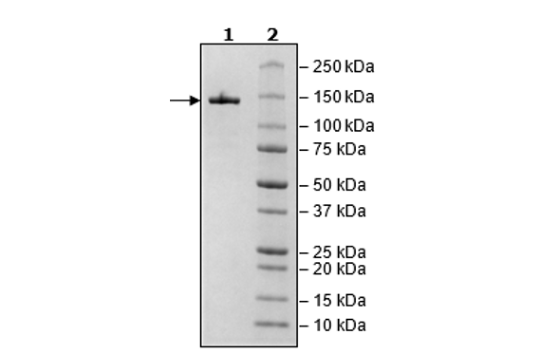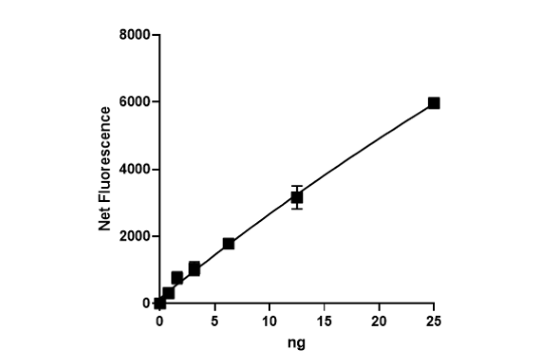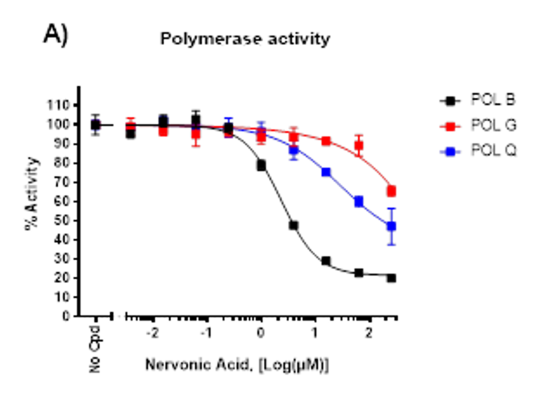DNA Polymerase γ (POLG), His-FLAG-Tag Recombinant
Recombinant human DNA polymerase γ (gamma), full length encompassing amino acids 2-1239 (end). This construct contains an N-terminal His-tag (6xHis) followed by a FLAG-tag. The recombinant protein was affinity purified.
This product has been cited 2 times.
≥90%
40 mM Tris-HCl, pH 8.0, 110 mM NaCl, 2.2 mM KCl, 0.04% Tween-20, 20% glycerol, and 100 µg/ml FLAG peptide
Polymerases are the enzymes responsible for synthesizing nucleic acids. Polymerase γ, also known as DNA polymerase subunit gamma, POLG or POLG1, belongs to the Family A of DNA polymerases and corresponds to the catalytic subunit of the mitochondrial DNA polymerase. It works in conjunction with POLG2 to replicate mitochondrial DNA. In addition to its DNA polymerase activity, it has a 3’-5’ exonuclease and a 5’dRP lyase activity for proofreading and repair. Mutations in polymerase γ cause mitochondrial dysfunction, as observed in SANDO (sensory ataxia neuropathy dysarthia and ophthalmoparesis), AHS (Alpers-Huttenlocher Syndrome) and MNGIE (mitochondrial neurogastrointestinal encephalopathy syndrome). Alternatively, the inhibition of DNA synthesis can be used as a therapeutic approach for diseases in which cell division or energetic needs are uncontrolled, such as cancer. Further studies into DNA polymerase inhibitors will bring new therapy options to cancer patients.
1. Ropp, P.A., and Copeland, W.C., Genomics 1996;36(3):449-458.
2. Lestienne, P., Biochem. Biophys. Res. Comm. 1987;146(3): 1146-1153.




